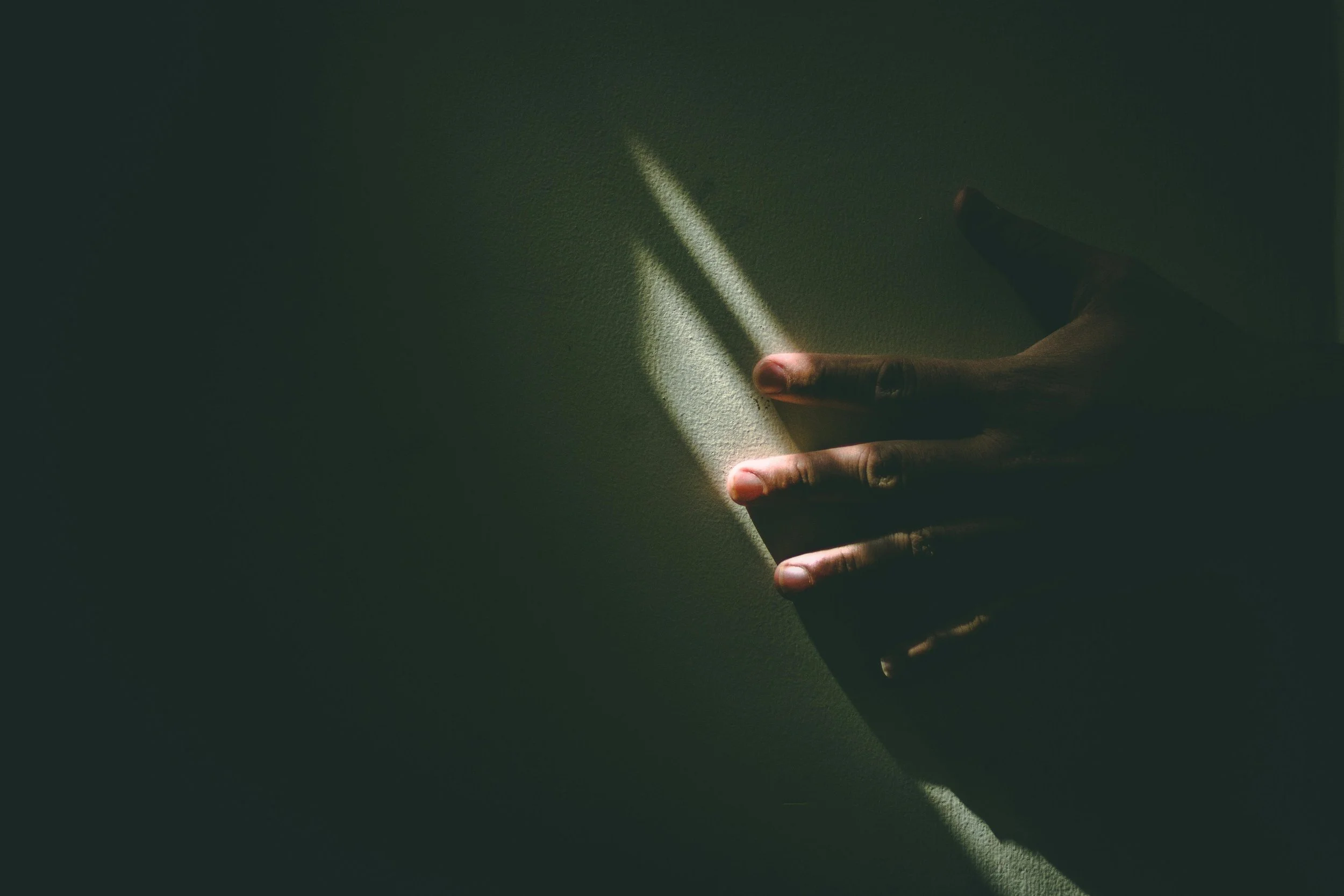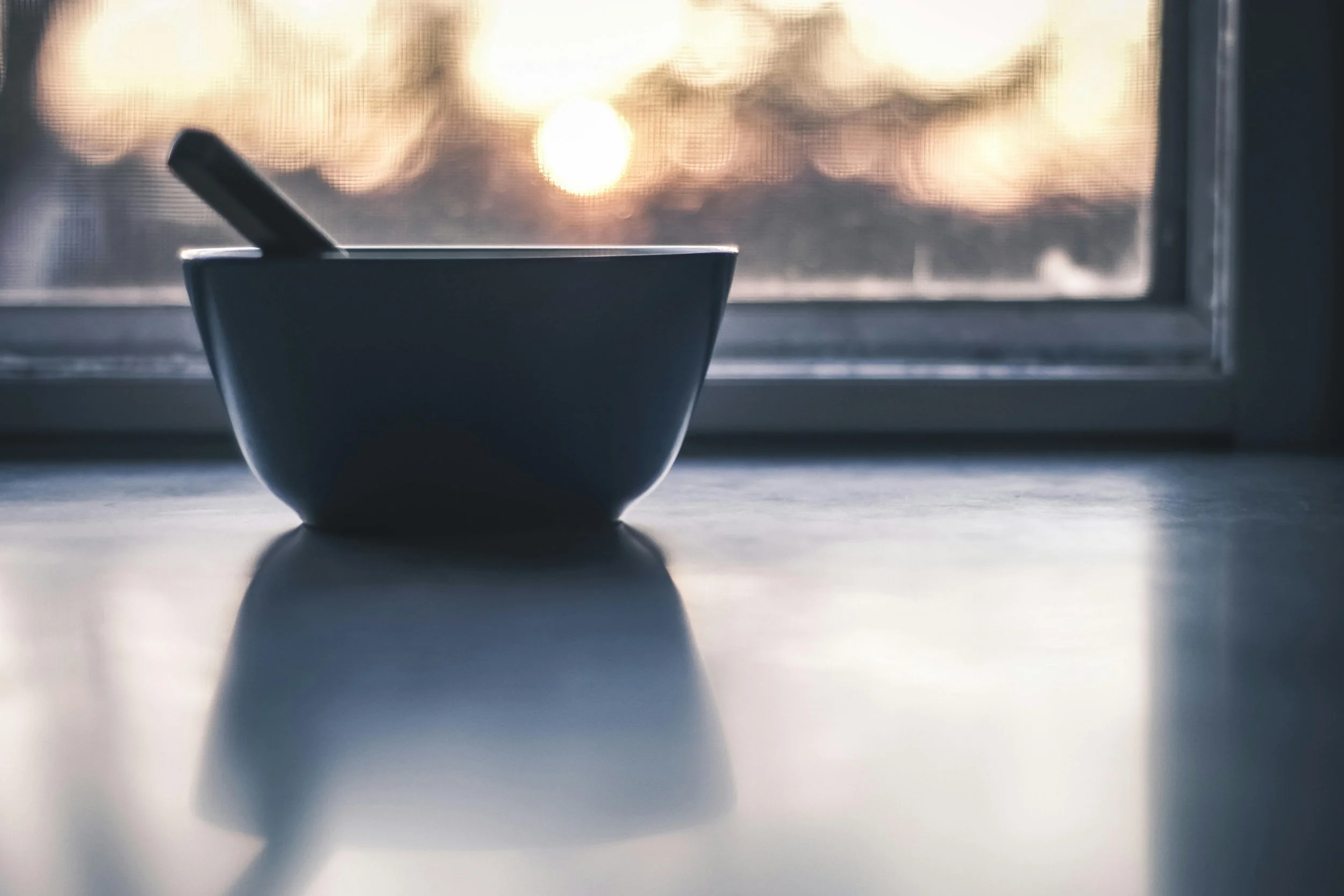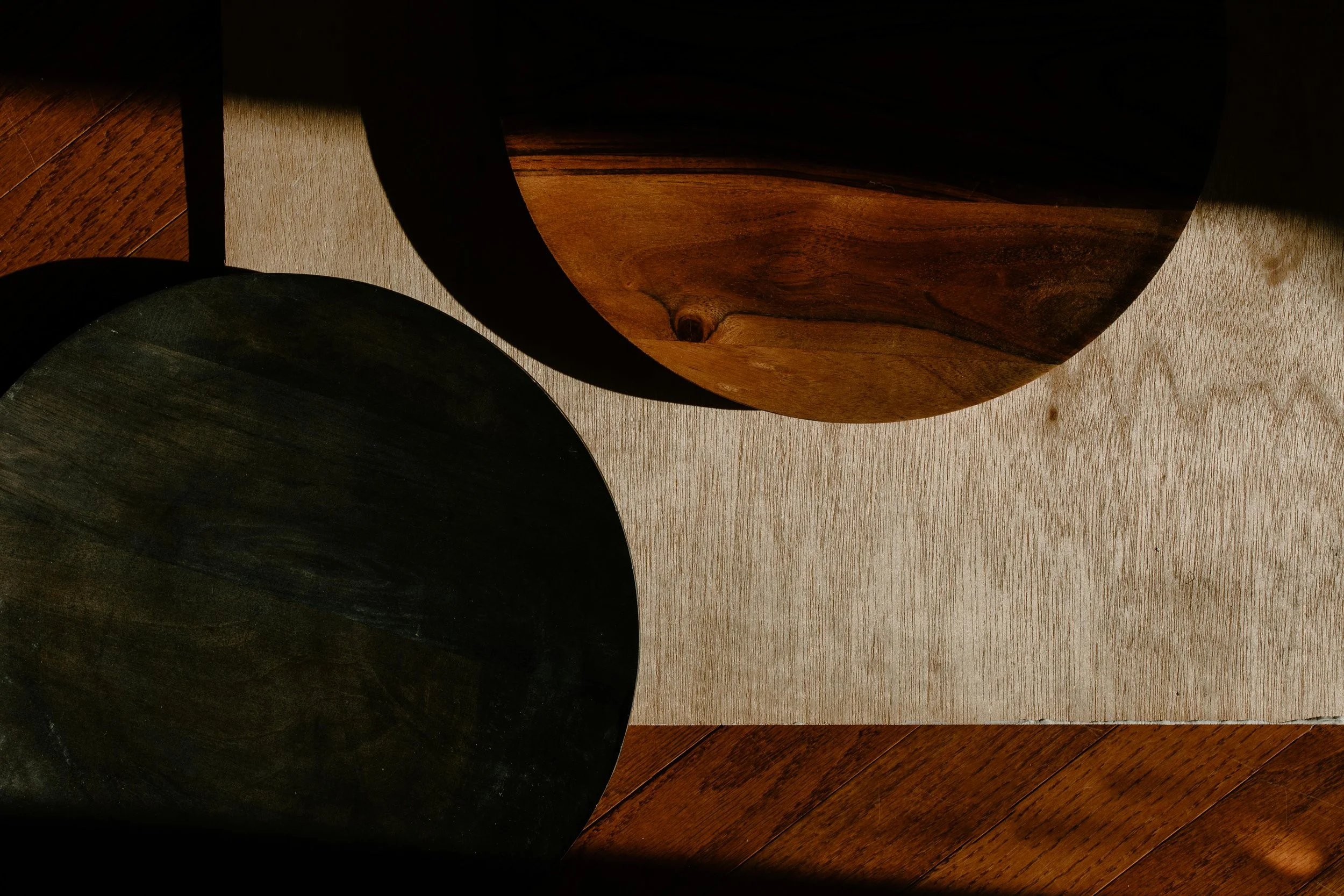The Room Begins to Breathe: How a Space Becomes Sacred
“Light teaches the room how to breathe.”
TL;DR – The Heart of It:
Coherence > décor: A sacred studio (especially in Santa Fe’s dry, high-desert climate) comes from warm light, clean air, quiet sightlines, and intentional objects that help the body exhale.
Regulation + ritual: Layered light and sound, fresh airflow, gentle textures, clear policies, and tiny repeatable rituals do more for nervous-system safety than any theme or trend.
Keep it light: Minimal scent, simple layout, and small, steady upkeep turn the room into a true collaborator—so when someone arrives, the space “breathes” with them.
The Room Begins to Breathe
Morning light slides across the floorboards, soft and angled, carrying a faint trace of cedar and salt. The diffuser hums like a heartbeat. It’s early—too early for clients—but perfect for the moment a room begins to wake in Santa Fe. I adjust a curtain, smooth a blanket, and listen for that subtle shift between silence and presence, the instant a space remembers what it’s for. Creating a healing studio isn’t only about paint or placement; it’s attention repeated until the room feels alive. This is the transition from preparation to embodiment—how waiting turns to doing, and how a physical room becomes a collaborator in healing.
What does it mean for a room to “breathe”?
When I say a room breathes, I mean circulation—of attention, sound, air, and light. In practice, it’s the way a fan softens silence, daylight glides over fabric, and fresh air replaces what’s stale. It’s also how my awareness moves: what I touch, what I soften, what I choose to notice. As those elements come into coherence, the nervous system settles. I treat the room like a co-practitioner. When my breath slows, acoustics feel rounder; when airflow is even, my shoulders drop; when sound is soft yet present, thoughts stop echoing. Clients sense this before a word is spoken. The language of “breath” is poetic, sure—but the evidence is plain: warmer light, cleaner air, and fewer visual demands so the body doesn’t have to work to feel safe.
Intention > aesthetics: why isn’t beauty alone enough?
A space can be gorgeous and still feel jangly. Coherence matters more than trend: the sense that everything in view is quietly pointing toward the same feeling—quiet, safety, arrival. My rule is simple: if an object doesn’t help someone breathe easier, it goes. Beauty that creates micro-tension (too many “statement” pieces, glossy surfaces that glare, shelves packed to the edge) is still tension. Tools stay when they clarify the work, not when they decorate it. I choose a clear mood—grounded, lunar, earthy, minimalist—and let light, texture, and layout follow. Cords, labels, and overflow baskets count as noise. When in doubt, I ask the only question that matters: does this help someone exhale?
Clearing the space: what are we actually removing?
Before a room can hold anything sacred, it has to let go. Clearing isn’t just tidying; it’s releasing what tugs at a nervous system—dust, stale air, lingering odors, and the residue of whatever happened here before. I start with windows open and unscented wipe-downs for the surfaces lungs and eyes notice first. If paint or adhesives are still off-gassing, I extend the airing and launder any fabric holding scent. One slow sound sweep—sometimes just a hum—resets my attention. I re-set the curtains and fix pockets of glare or gloom that make a body brace. Then I clear what’s less visible: my own hurry or anxious edge gets named and exhaled—two hands on the doorframe, six slow breaths. “Clean,” to me, is mostly fresh air and honest order, not perfume.
“Fresh air and honest order do more than perfume.”
Setting the bones: layout, anchors, and edges
A space needs a spine before it can feel sacred. I begin with the floor plan—where the table lives, how someone enters, and where they pause to arrive. The table gets generous breathing room so I can circle without bumping and the client never feels crowded. Near the door, I create a seated corner with a stable chair, a small surface for water or a notebook, and soft light that says, “Take your time.” Then I add anchors: a grounded rug beneath the table, a closed cabinet to hide tools, a living plant or smooth stone bowl, and one darker object that quietly “pins” attention. These act like ballast and keep the room from floating into pretty-but-unstable. Finally, I tend the edges—thresholds and doorframes become invitations; drapery softens sightlines and creates micro-boundaries around changing space and storage. Clear borders translate into felt safety.
Where the body arrives (entry, chair, path)
I think of arrival as choreography. From the entry, a client should know exactly where to go—no hovering, no guessing. A clear landing spot with a stable chair, soft light, and a hook or basket signals permission to settle. Closed storage reduces visual noise so the eyes aren’t forced to filter clutter. The path to the table stays wide and unobstructed; cords and equipment tuck away from sight lines. After the session, that same chair becomes a re-entry point. A small writing surface waits for notes, water, or a brief reflection so the nervous system isn’t rushed back into the world. These micro-moments add up to a quiet “yes” from first step to last.
Nervous system first: what actually regulates a space?
If the body doesn’t feel safe, nothing deeper lands. I set the room for regulation before I worry about art or altars. Light comes in layers—a soft ambient wash, a focused task light where I need precision, and a small candle-like glow to cue slowness. Overhead glare makes bodies brace; shaded light lets shoulders drop. Sound is held but not smothered; total silence can amplify inner noise, so a low fan or gentle masking smooths edges, with pockets of quiet between tracks so the room can breathe. Temperature and air stay clean and consistent—fresh air and laundered linens over fragrance. If there’s any scent at all, it’s faint and brief. A few tactile anchors—linen, velvet, unfinished wood—invite orientation to weight and warmth without visual clutter. And the metronome is my breath: two minutes of four-in, six-out before the door opens. Slower breath, slower voice, steadier hearts.
Light as language (circadian ease)
Light sets tempo. Too bright or too cool and bodies brace; warm and adjustable and the room invites a deeper breath. I keep bulbs in the warm-to-neutral range—more sunrise than surgeon. When I need precision, I add a neutral task lamp rather than cooling the whole space. Dimmers change everything; there’s a true difference between “on/off” and “exhale.” One ambient glow, one task light, and one small accent create a steady center of gravity. A subtle moon cue—a round shade, frosted globe, or crescent silhouette—nudges the mind toward night without tipping into kitsch. By day, sheers keep light diffuse; by evening, layered drape cocoons the room and softens street glare. The goal is circadian ease—light that feels like time passing gently, not a spotlight.
Sound, air, and texture
Total silence can make inner chatter louder. A low fan or gentle instrumental bed smooths the edges, with true quiet layered in, not imposed. Air moves but doesn’t draft; temperature stays in the “not worth thinking about” zone. Texture does the rest: a linen throw, a velvet pillow, unfinished wood under the fingertips. Two or three textures are enough. The body recognizes weight and warmth and lets go of the armor it didn’t know it was wearing. In the Santa Fe wellness community, I hear this a lot: people arrive winded by pace and dryness; the quickest relief is soft light, fresh air, and a room that asks less of the eyes.
“Layer the light; the body will do the rest.”
Rituals that hold the container
A routine is repetition. A ritual is repetition with meaning—a small ceremony that says, “We’re crossing a threshold now.” My two-minute pre-session ritual is simple: open the room to a breath of fresh air; sweep attention across corners, table, and chair; place three anchors—water, clean linens, a small stone or light—and then take four slow cycles of long-exhale breathing. Closing mirrors opening. I reclaim tools and surfaces, jot one sentence about the room’s mood, and reset the light. Tiny, repeatable, meaningful acts are how a room becomes a steady collaborator.
Micro-rituals that keep the room coherent
Big transformations ride on small, repeatable acts. Weekly, I swap linens, reset the table, do quick floor care, shake out fabrics so they fall softly again, and tend plants so the room feels alive. Monthly, I remove one item and add one breath of negative space: a shelf cleared, a tray emptied, a surface left deliberately quiet. Cables get tucked and bottles consolidated because clutter whispers “hurry.” Seasonally, I shift textiles—airy to weighty or back again—adjust light levels by a notch, and retune playlists to match the length of the night. Small, steady, meaningful—this is how the space keeps breathing between sessions.
Scent, smoke, and sensitivity: how to avoid overdoing it
Go lighter than you think. Many people are fragrance-sensitive, and even “natural” aromas can overwhelm in a small room. Fresh air and truly clean textiles calm the nervous system more reliably than perfume, incense, or heavy blends. My default is low-to-no scent: I air things out, launder well, and let the room smell like…nothing. If I use botanicals, I choose hydrosols over oils, single notes over blends, and one tiny spritz well before a client arrives—never during bodywork. I skip heavy smoke; it lingers in fabric and can be triggering. When in doubt, ventilation beats masking. The vibe I’m after is breathable and unobtrusive so the body does the settling—not the scent.
Boundaries are sacred architecture: what creates safety?
Walls don’t make a room sacred—clear boundaries do. They’re the quiet structure that lets softness feel safe. I name the container upfront: an arrival window to land, devices off so alerts don’t tug at attention, a clear late-cancel policy that respects both schedules, and confidentiality so what’s shared stays inside the room. Visual boundaries matter just as much. A curtain or screen creates a private changing nook; closed storage hides oils and cords; clear surfaces and softened edges keep the eyes from bracing. Between sessions, I keep a practitioner boundary ritual: a slow hand-wash, a quick check of shoulders, jaw, and breath, one note in the chart to set a story down, then a reset of linens and light. The message to the room—and to me—is simple: new hour, new beginning.
Place note — Santa Fe under the floorboards
High desert light, adobe warmth, morning chill: the room learns the climate here. I borrow the palette from what already exists—wood, clay, stone—and keep offerings local and small. It’s not a theme; it’s a quiet rooting for a Santa Fe healing space that feels genuinely grounded.
“Clear boundaries are the softest kind of safety.”
Troubleshooting: why doesn’t the room feel right yet?
Sometimes a space looks “done,” but the body won’t exhale. When that happens, I troubleshoot the obvious first. Overcrowded altars buzz a nervous system; a single harsh light makes shoulders brace; shelves crammed at eye level create visual noise; even “natural” scents can read as pressure. Reducing objects by a third, shading a bulb or adding one dimmer, and introducing a soft sound layer often changes everything. I reroute the entry path so “arrive → sit → table” is obvious, and I lower the eye line with calming textures where the gaze naturally lands. Then I check the personal variable: my hurry is the draft under the door. Two minutes of long-exhale breathing, a slow hand-wash, and one deliberate reset—fold, place, pause—usually restores the room’s breath and mine.
When the room answers back
There’s a day when the studio stops feeling arranged and starts feeling inevitable. Time changes texture; sessions seem shorter yet fuller. Clients lower their voices without being asked. I notice I’m less performative and more present, as if the space is holding half the weight. That’s coherence—light, sound, air, and intention aligning so the nervous system doesn’t have to work so hard. The better it works, the less the objects matter. The altar fades into tone; the perfect throw becomes simple warmth. What remains is feeling: shoulders dropping, a steadier breath, the sense that something trustworthy is here. After a session I pause before flipping a switch. The room carries a faint heat, as if it exhaled too. Sometimes there’s a softened place where someone wept and then softened again—not drama, but release. That’s when I know the space isn’t just decorated; it’s alive and helping.
Epilogue — space as a living collaborator
Before I lock up, I thank the room. Not ceremonially—just a palm on the doorframe, one long exhale, a quiet “you did well.” I smooth the blanket, straighten the chair, return the small stone to its place. These gestures aren’t chores; they’re how I keep a relationship with a space that holds other people’s tenderness. A sacred studio isn’t a finished design; it’s an ongoing conversation where matter, breath, and meaning meet again and again. The textiles and lights are the matter; my cadence and a client’s sighs are the breath; the way we show up for each other is the meaning. When those align, the room doesn’t just look beautiful—it participates. And each time I tend it, it learns my rhythm a little more.
A gentle invitation
I’m opening later this fall. If you’d like first dibs on appointments, add your name to the waitlist—I’ll email you when the calendar goes live and offer early booking windows at Veluna Wellness Santa Fe. No spam, no obligations, just a quiet nudge when it’s time.




